This wonderful Cornish workshop and museum is dedicated to the legacy of studio pottery trailblazer Bernard Leach
5 pumpkin artworks for Halloween
5 pumpkin artworks for Halloween
27 Oct 2023
Gourd your loins: it’s pumpkin season. Whether it’s for an autumnal stew, Halloween decoration or a Thanksgiving pie, these winter squashes will be ruling the roost. Here, we light a candle to five artists who have taken the mighty pumpkin from its patch and turned it into art
Long associated with the time of harvest before Halloween celebrations took root, pumpkins have been the focus of stories and art for much of human history.
Whether it’s Cinderella’s carriage or the folk story of Stingy Jack O’Lantern (a trickster forced to roam the world for eternity, with only an ember to light the way after he got on the wrong side of Satan), pumpkins clearly fascinate us.
Artists, too, are drawn to this curiously beautiful fruit (for, yes, it is a fruit). Here are five examples of how the pumpkin has entered their oeuvres…
Pumpkin ahoy
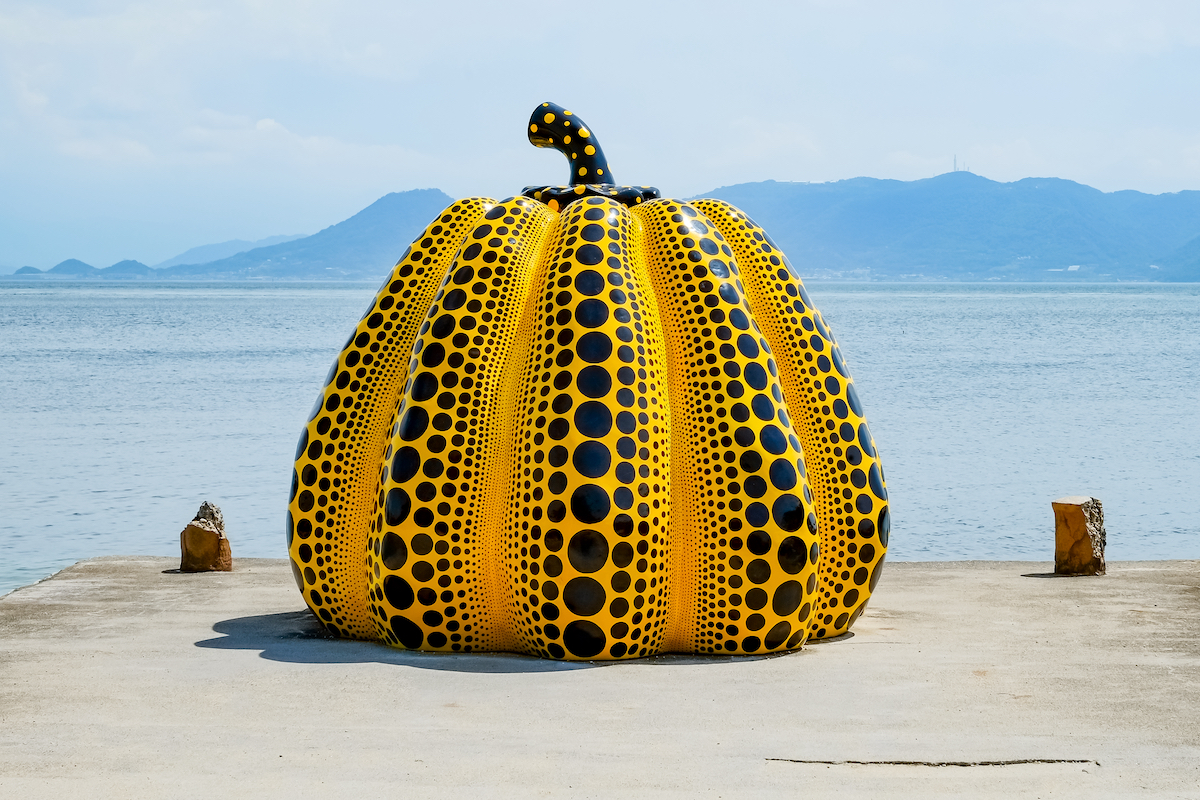 Yellow Pumpkin, 1994, by Yayoi Kusama (1929–present). Image: Carlos Huang/Shutterstock
Yellow Pumpkin, 1994, by Yayoi Kusama (1929–present). Image: Carlos Huang/Shutterstock
No artist today is as inextricably linked with the pumpkin as the dot-centric Yayoi Kusama, who has been incorporating the fruit into her creations since 1946.
Most famous, perhaps, is her fibreglass-reinforced sculpture that has sat on Naoshima Island in Japan’s Seto Inland Sea almost continuously since 1994. The ‘almost’ refers to an incident in August 2021 when it was swept out to sea by a typhoon. It was recreated and unveiled the following year.
Kusama has described her pumpkin passion as stemming from ‘their humorous form, warm feeling and human-like quality and form’. Her parents had a seed farm in pre-war Japan, and Kusama has seen the vegetable as a representation of her childhood, fertility and life. It’s a symbol she has returned to time after time, always in a spectacular manner.
Lunar species
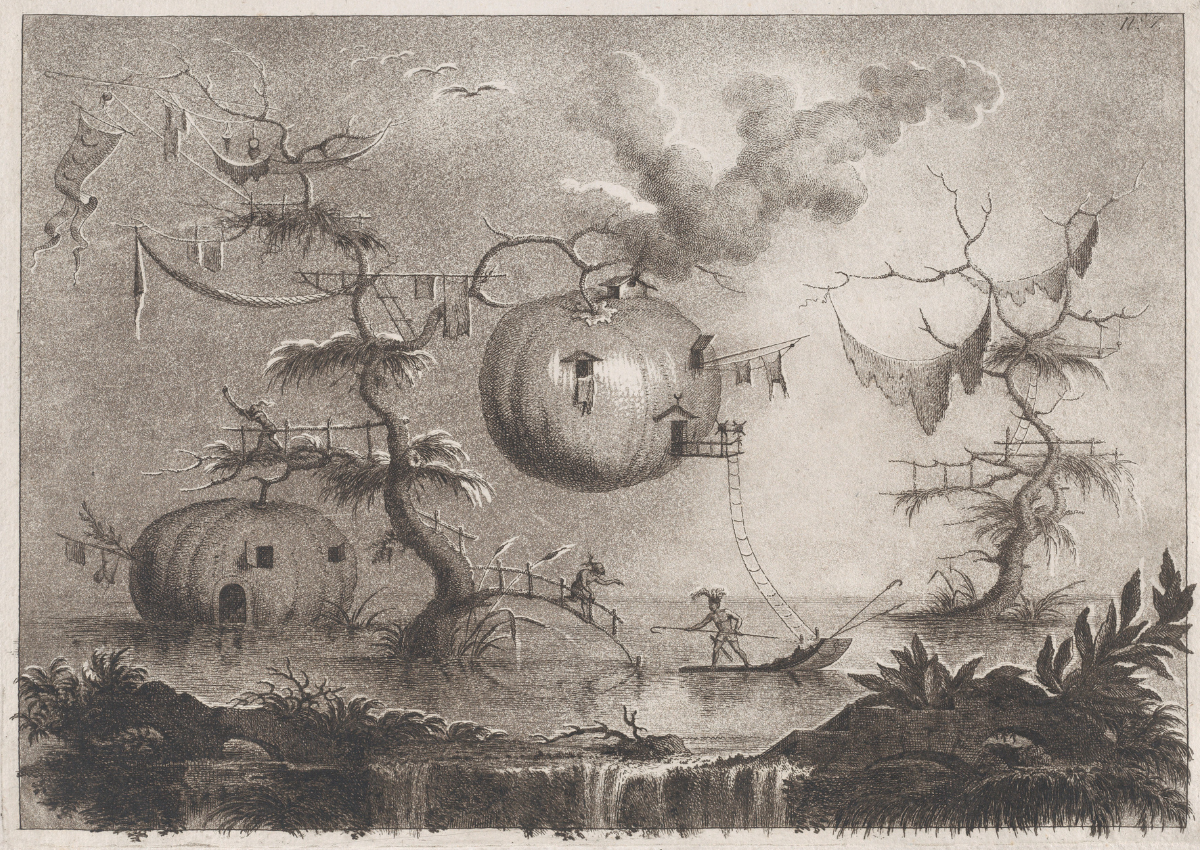 Plate 7 from the collection of the most notable things seen by John Wilkins, erudite English bishop, on his famous trip from the Earth to the Moon… a post-1783 work by Filippo Morghen (1730–1807). Image: The Met Collection, Harris Brisbane Dick Fund, 1932
Plate 7 from the collection of the most notable things seen by John Wilkins, erudite English bishop, on his famous trip from the Earth to the Moon… a post-1783 work by Filippo Morghen (1730–1807). Image: The Met Collection, Harris Brisbane Dick Fund, 1932
The pumpkin: a vegetable native to North America and, it seems, the moon. At least that’s what one would believe from following Italian artist Filippo Morghen’s etchings, which are presented as illustrations of an intrepid traveller’s voyage to the lunar surface.
According to the series, the moon is inhabited by individuals who appear to share some cultural traits with the indigenous people of North America, while living in pumpkins to ‘secure against wild beasts’. These beasts could well include the alarmingly oversized snails and birds seen elsewhere in the collection.
Bearing fruit
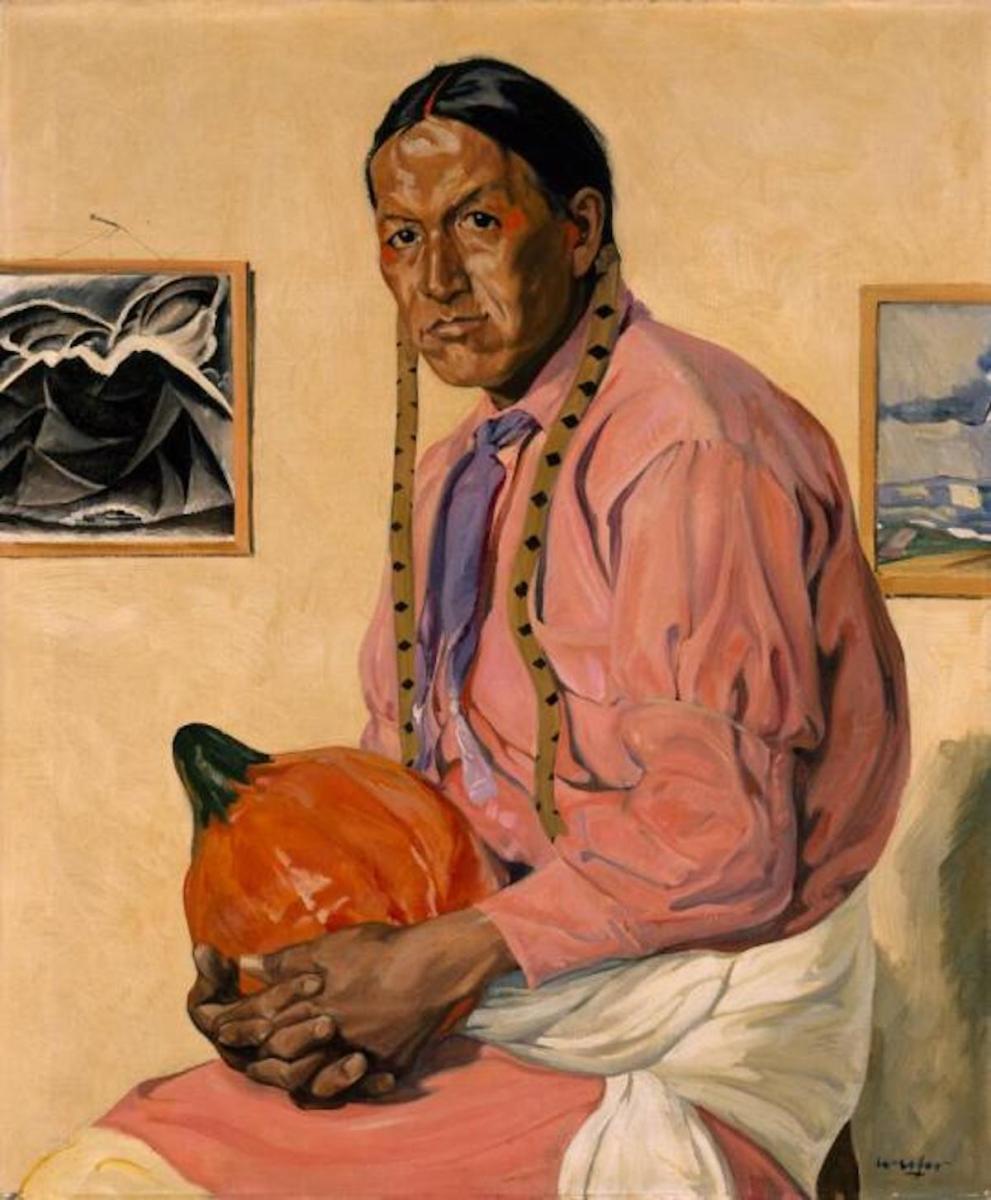 Portrait of a Man with a Pumpkin, 1920s, by Walter Ufer (1876–1936). Image: The Museum of Fine Arts, Houston, Gift of General and Mrs Maurice Hirsch
Portrait of a Man with a Pumpkin, 1920s, by Walter Ufer (1876–1936). Image: The Museum of Fine Arts, Houston, Gift of General and Mrs Maurice Hirsch
We alight on this powerful portrait to place the spotlight on perhaps a lesser-known artist: the German-born Walter Ufer. He moved to Kentucky in 1880 and his childhood was shaped by life in the States. His early career included lithography and printing, and he spent time back in Germany, where he studied fine art.
In the 1920s he found success with paintings of New Mexico, particularly those that emphasised the life of the indigenous people of North America. The pumpkin, of course, had been one of the earliest known food crops in North America, and a favoured one. Here, a figure cradles the famed fruit. With bright colours and vivid graphics, Ufer’s paintings, as illustrated so well here, have a distinct tone and warmth.
The artist was a key figure in the state’s art scene and he was closely involved in the Taos Society of Artists – a group based in the New Mexico town of the same name that sought to turn what was then a small colony of artists into a hub of artistic brilliance.
Clues in the patch
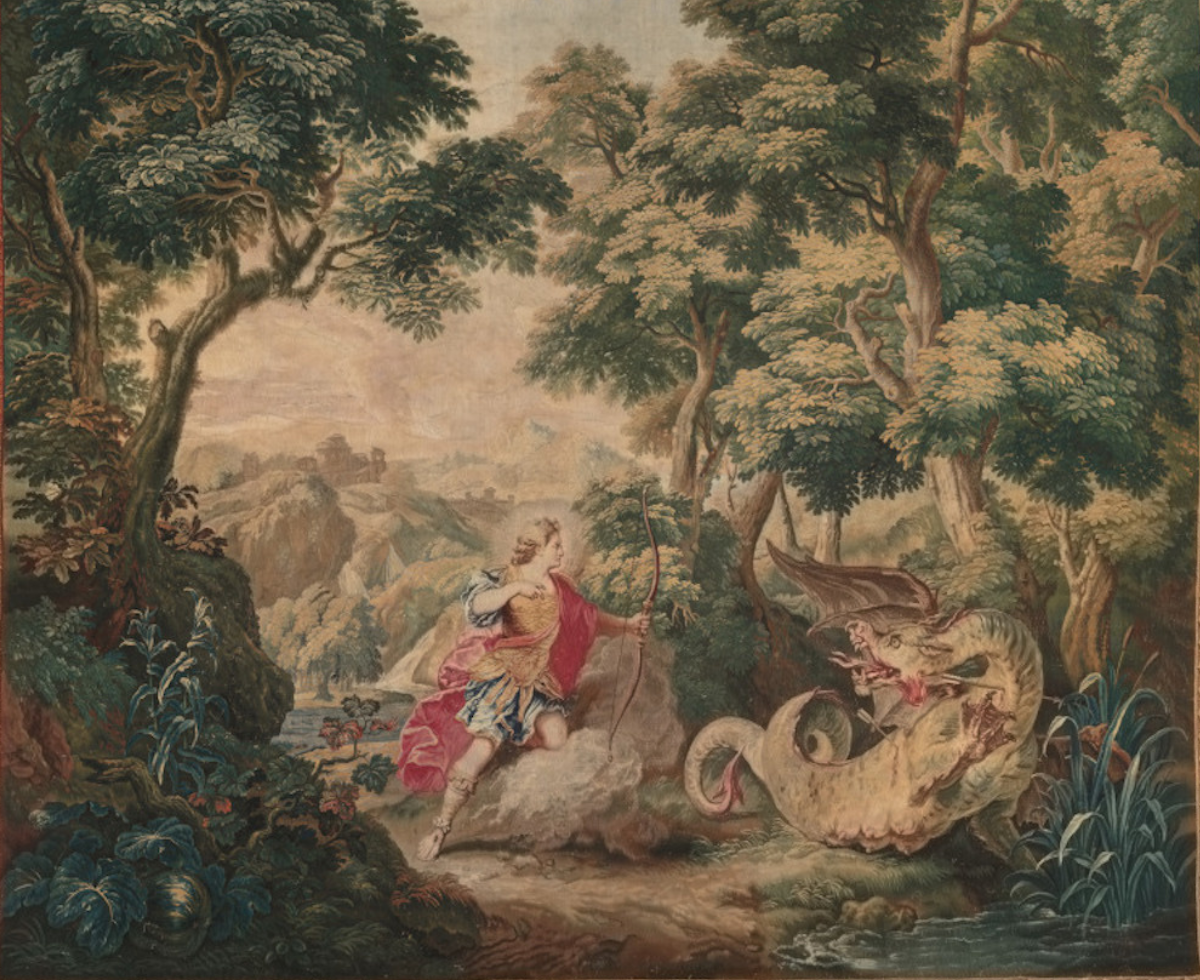 The tapestry Apollo and the Serpent Python (from Set of Ovid's Metamorphoses), 1700–30, after Nicolas Bertin (1668–1736); Gobelins Manufactory (est 1662). Image: The Cleveland Museum of Art, Gift of Mrs Matthias Plum
The tapestry Apollo and the Serpent Python (from Set of Ovid's Metamorphoses), 1700–30, after Nicolas Bertin (1668–1736); Gobelins Manufactory (est 1662). Image: The Cleveland Museum of Art, Gift of Mrs Matthias Plum
Here we give you a textile rendering of an ancient Greek scene in which we see Apollo, god of the sun, poetry, music and more, battle with the serpent child of Gaia. It’s a key moment in Apollo’s story; his triumph over the seething serpent, it is said, fed his ego and led him in relentless pursuit of the uninterested naiad Daphne.
But what has this got to do with pumpkins?
Turn your attention to the lush depiction of nature around the god and his foe, including that beautiful pumpkin patch to the lower left. Not merely attractive to look at, this ‘patch' of the tapestry reveals something of the artistic process of its making and tells of the passage of time since. A once green pumpkin in that lower left corner now appears blue. This is due to the original mixture of blue and yellow dyes of the threads degrading over time, leaving only the former behind.
Carving out a name
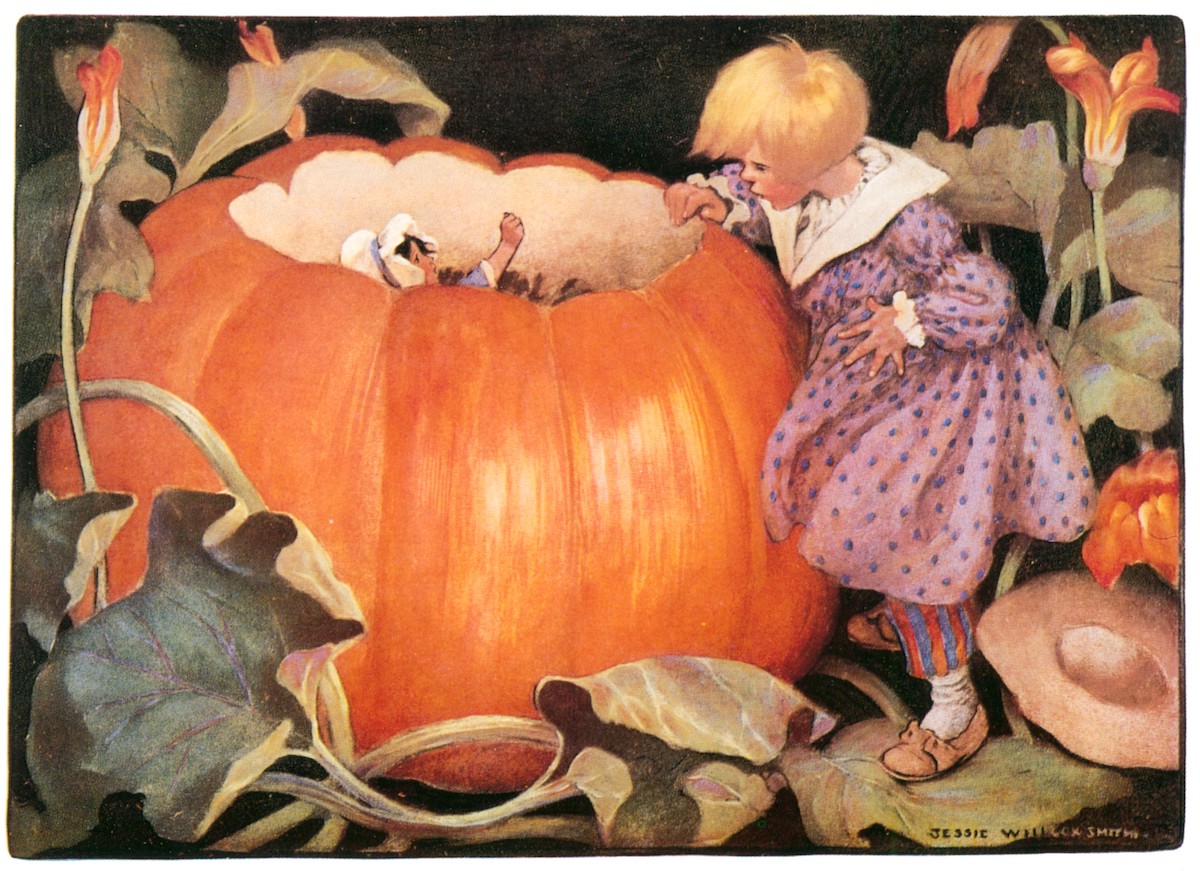 Peter, Peter Pumpkin-Eater, 1918, Jessie Willcox Smith (1863–1935). Image: Public domain, taken from The Jessie Willcox Smith Mother Goose, The New York Public Library
Peter, Peter Pumpkin-Eater, 1918, Jessie Willcox Smith (1863–1935). Image: Public domain, taken from The Jessie Willcox Smith Mother Goose, The New York Public Library
A leading light of the golden age of American illustration – a period spanning pre-1880 until the early 20th century – Jessie Willcox Smith’s creations featured in some of the top US magazines and books. Creating illustrations for Little Women, Evangeline and The Water Babies and Harper’s and Good Housekeeping magazines, among others, the former teacher came to be considered one of the greatest illustrators of her time.
This example is taken from the pages of her version of Mother Goose, a board book still sold today. It was a huge commercial success and helped to secure Smith a significant $1,500 fee per cover illustration (some $30,000 in today’s terms) in the years that followed.
About the Author
Ciaran Sneddon
writes for The Arts Society
JOIN OUR MAILING LIST
Become an instant expert!
Find out more about the arts by becoming a Supporter of The Arts Society.
For just £20 a year you will receive invitations to exclusive member events and courses, special offers and concessions, our regular newsletter and our beautiful arts magazine, full of news, views, events and artist profiles.
FIND YOUR NEAREST SOCIETY
MORE FEATURES
Ever wanted to write a crime novel? As Britain’s annual crime writing festival opens, we uncover some top leads
It’s just 10 days until the Summer Olympic Games open in Paris. To mark the moment, Simon Inglis reveals how art and design play a key part in this, the world’s most spectacular multi-sport competition



